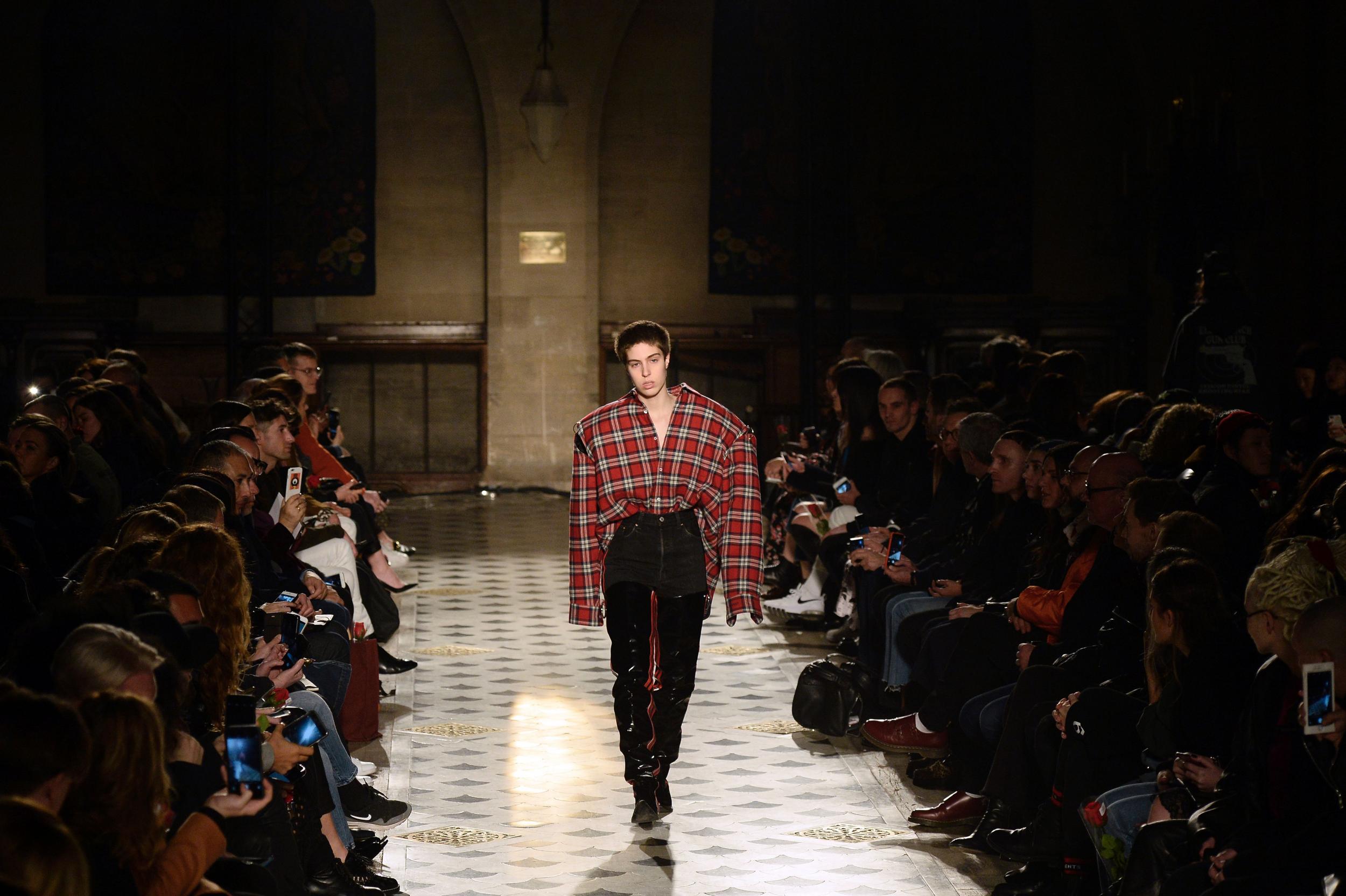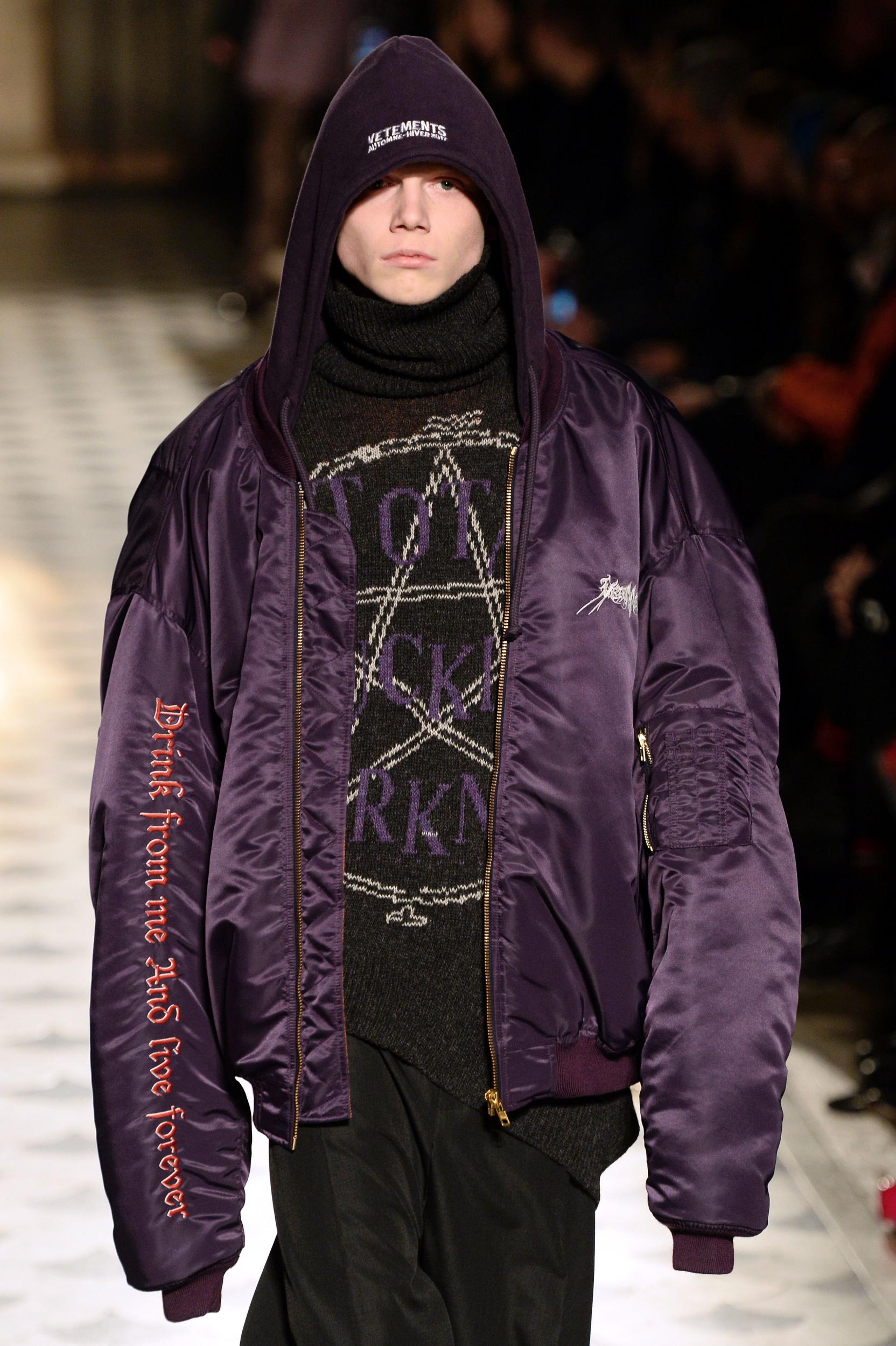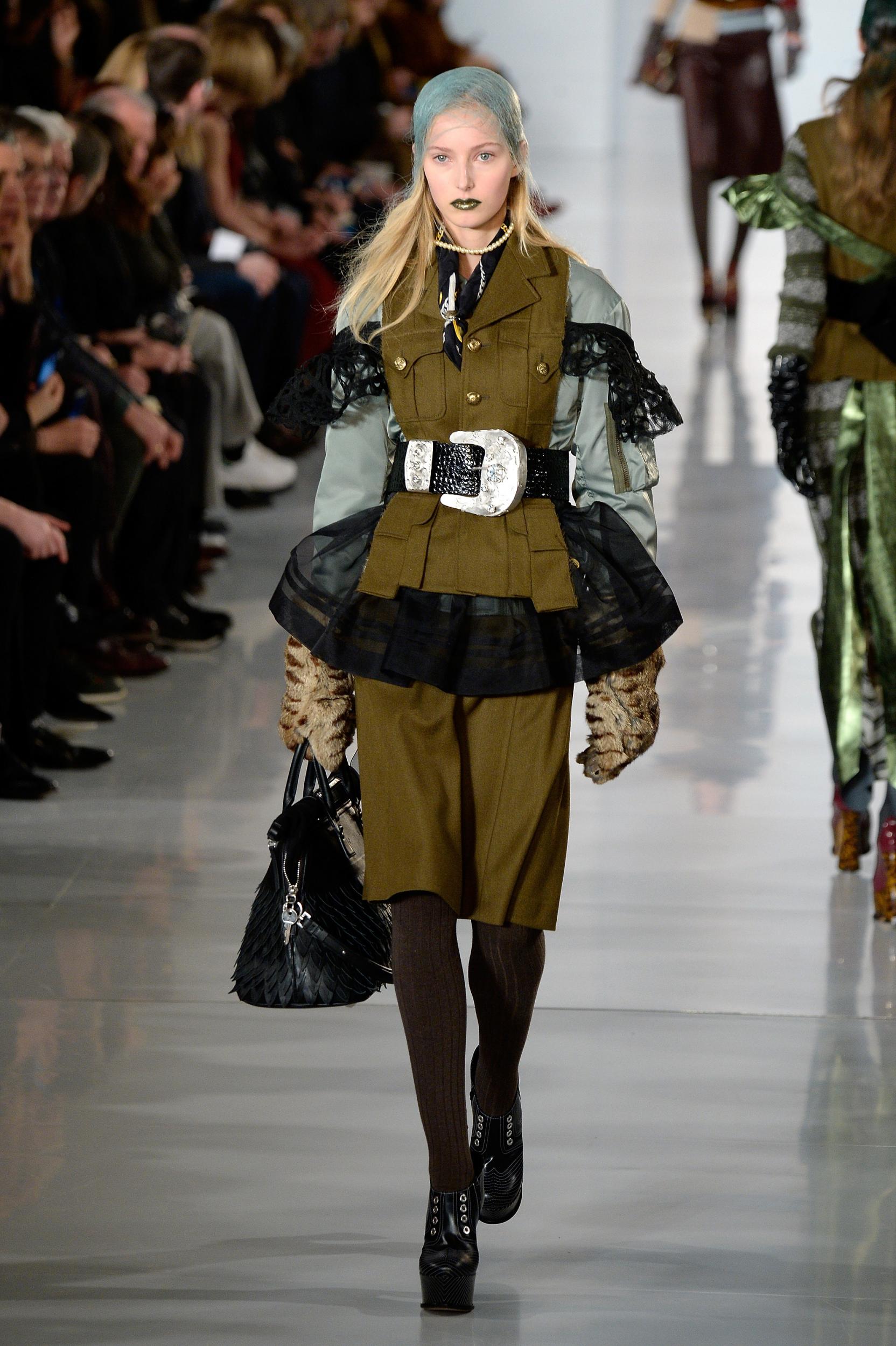Praying for something new: in Paris, Vetements' vestments and John Galliano's Margiela
The autumn/winter 2016 season has begun in Paris. Fashion editor Alexander Fury lauds Vetement's ingenuity and John Galliano's unfolding vision for Maison Margiela

Your support helps us to tell the story
From reproductive rights to climate change to Big Tech, The Independent is on the ground when the story is developing. Whether it's investigating the financials of Elon Musk's pro-Trump PAC or producing our latest documentary, 'The A Word', which shines a light on the American women fighting for reproductive rights, we know how important it is to parse out the facts from the messaging.
At such a critical moment in US history, we need reporters on the ground. Your donation allows us to keep sending journalists to speak to both sides of the story.
The Independent is trusted by Americans across the entire political spectrum. And unlike many other quality news outlets, we choose not to lock Americans out of our reporting and analysis with paywalls. We believe quality journalism should be available to everyone, paid for by those who can afford it.
Your support makes all the difference.The collective known as Vetements elected to show their autumn/winter 2016 collection in the American Cathedral in Paris. Fifty flags, one for each state, fluttered from the ceiling. The invite was a single red rose, the sort of thing you may throw at the stage, when the fat lady is done singing.
It feels like a long time since we’ve talked, at any length, about those elements to a fashion show - cross-examining the physicality of invite and setting, loading them with meaning as opposed to taking them as just a way to summon an audience and a place to park them. Vetements held their show at 9pm. Clutching that rose, in a black dinner jacket (I had an event afterwards), at that time of night, I looked like I was on my way to, or maybe from, a blind date.
It kind of was. No-one really knew what to expect from Vetements. Like a Tinder first-timer, plenty of the audience had only seen pictures online, cramming themselves into one of the cathedral’s pews alongside Kanye West, to see if they would fall in love. The church was symbolic for two reasons - it synced with a collection that had Americana at its heart, with hoodies and tattoo prints and cowboy boots and Marlboro man proportions, the whole thing tainted with religious extremism, satanism mingling with sportswear tricked out like cassocks (not as gimmicky as it sounds).
And it’s on the Avenue Georges V, across the road from the original couture house of Cristobal Balenciaga. Demna Gvasalia, the head of the Vetements collective (flip over a label, characteristically stating the category - outerwear, tricot - alongside the season, and his name is woven in back) was appointed artistic director of Balenciaga at the end of the last show season, and presents his first clothes for the house on Sunday. The physical shadow of the Balenciaga building maybe reflects the metaphorical shadow of his work. Or how about a certain reverence for a couture house once described as a “chapel”? Stories state that the devoutly Catholic Monsieur Balenciaga used to pray, each afternoon, in an actual chapel by his atelier: was it here, in the very pews where fashion’s congregation now cluster to see the new chosen one?
A PR told me the place was Episcopalian. So much for that.
Talk to Gvasalia and he says there’s no concept behind Vetements, besides what people want to wear. Which I believe, in part. It’s just that Vetements are listening to interesting peoples' points of view. You often get distracted by the showier elements of their clothing - in this case, wide American Footballer shoulder pads, another nod to the USA, that filled the narrow gaps between pews that denoted the catwalk - but in reality it’s an interesting play with proportion that gives their clothes a sense of newness. The toying between undersized and oversized, the tugging-up of boots to thigh-high, the pulling down of sweatshirts into dresses. They look familiar, but alien.
That was kind of the whole point of this show, leaping on American cultural imperialism as something alien and other. Gvasalia is from Georgia - eastern Europe, not the southern state. So are many of his team. Running through a litany of American cliches lead to arresting combinations, a fusion of Little House on the Prairie with the Columbine shootings, religious puritanism with sexual fetishism, clean-cut all-Americanism with something slightly satanic.

There’s a teenage feel to Vetements, an idea of thumbing your nose and playing with elements to arouse distaste or discomfort. One printed t-shirt read “Straight Hate.” (Vetements love a slogan t-shirt: as a comment, they should avoid their proliferation pigeonholing them). That could be a comment on sexuality: Vetements shows are a sartorial orgy, muddling men and women in men’s and womenswear, fuzzing any line you car to think of. It also chimes with their physical love of something skew-whiff, of twisted normalcy. Pulling something off-kilter to make it more compelling. It’s easy to do that in styling - many people do. But when you watch these Vetements clothes, you realise it’s actually built in. That’s why they’re resonating so distinctly.
I couldn’t help but ally this Vetements show to John Galliano’s Maison Margiela show Wednesday morning. If we’re talking set-pieces and mise en scène in an envelope, Galliano’s the originator: he once sent a cachet of love-letters, some desert sand and a bullet as an invite. As opposed to, say, the location or time. Martin Margiela did similar things: one invite was a Metro map of Paris that many editors simply threw away. But Galliano’s nineties approach is often decreed irrelevant in today’s fashion landscape, while Margiela’s is deified? They’re not that different, really.
Galliano’s tenure at Margiela thus far - and probably for a few seasons yet - has been about connecting the dots between two seemingly disparate legacies. It can occasionally remind you of someone very large desperately trying to squeeze into a dress that’s very small. Once the zip is fastened, there’s a sense of accomplishment, regardless of the overall appearance.
At Galliano’s giddy Margiela shows, a barrage of ideas can often overpower. And while you’re enlivened that they’re all there, and many great, you long for an edit, to pull a discernible, singular aesthetic that denotes this meeting of two defining talents, and do away with distractions. This time Galliano declared the inspiration was “raw-core,” tied to the tear-away looks he proposed for his “Artisanal” haute couture show. The similarities were there in shredding and patchworking - patchworking of fabric, garments and most importantly of ideas, like when flounced aprons created a basque façade on chopped-apart army jackets, cinched with an outscale belt. They looked like a sketched-out couture silhouette decoupaged with something different inside. Coats had entire dresses pasted to their fronts. Dresses were chopped in half and mashed together in different prints.

The point was for it all to be scrappy and slightly slapdash, ideas rammed together with spontaneity. Obviously, it takes time to make them, so retaining that sense of immediacy is a challenge. Yet there’s just so much stuff to distract that it’s difficult to dissect and digest what Galliano is offering. The clarity of his couture is refreshing - for ready-to-wear, Galliano wants to show everything he can do. Ramming that all into a catwalk show is tricky.
Like Vetements, the real joy of what Galliano is doing is on the shop floor. And, in contrast to his almost anti-commercial flights of mid-nineties fantasy, that feels absolutely modern and utterly relevant. Pick up one of his Margiela pieces and you’re confronted, coaxed and seduced by design details that couldn’t possibly be showcased on the catwalk. How to see, for instance, that you expose the lining from inside his “5ac” handbags, tugging it out to form an exterior flap? Or that transformative buttons on the inside of coats from his first collection convert their length, or allow linings to be pulled out to form dresses? There was always something magical to Galliano’s garments, and it’s still embedded in his work at Margiela.
The house’s editorial identity remains, perhaps, a work in progress. But what could be more Margiela than that?
Join our commenting forum
Join thought-provoking conversations, follow other Independent readers and see their replies
Comments